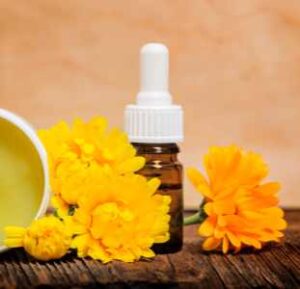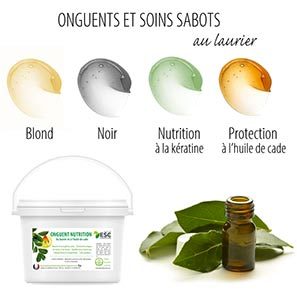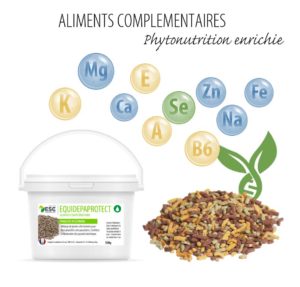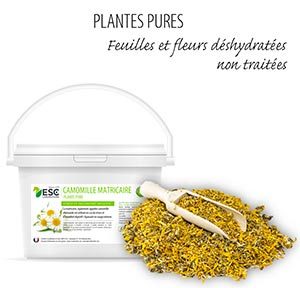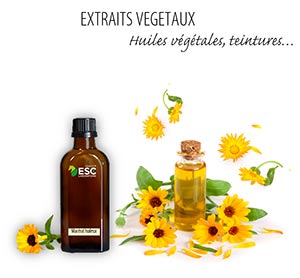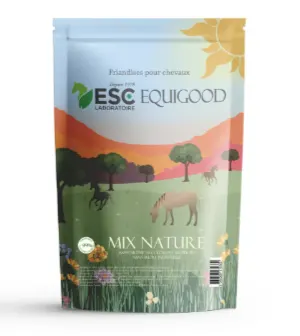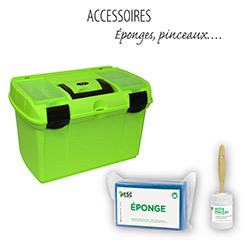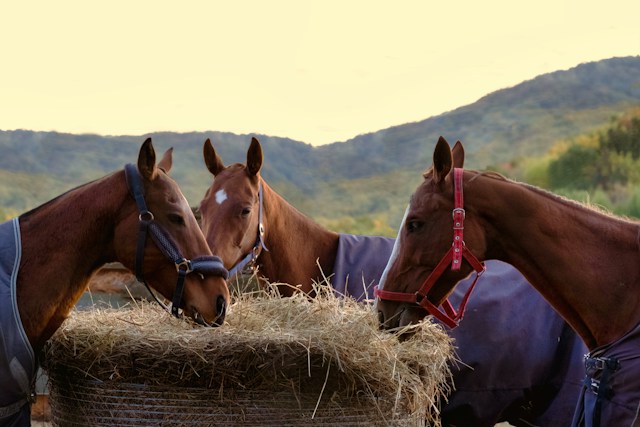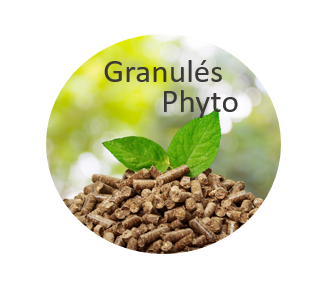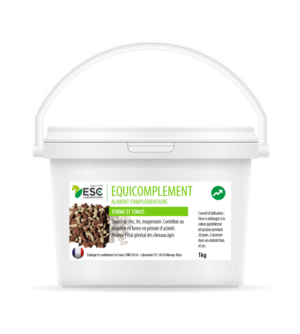When living in a wild state, the horse has a varied diet, especially because it can consume a wide variety of plants. But domesticated, sone can find one's food fonddened or unbalanced.
In order to best meet its needs, you must adapt your horse's ration to its needs, in particular in vitamins and minerals. In order to prevent possible health problems related to inadequate diet, as excesses can cause health problems, it is sometimes necessary to supplement it with a CMV.
In this article, we explain what lies behind the name Mineral and Vitamin supplement And when to give it to his horse.
What is a CMV?
The CMV is a Mineral and Vitaminated Supplement. In practice, therefore, it is a matter of concentrated in trace elements and vitamins your horse may need to be healthy.
It may take several forms. In commerce, you will most often find VMCs in the form of small granules, more or less regular according to the method of manufacture. At ESC, our CMV are made cold because the heat destroys many nutrients.
Should we give a CMV to a grass or hay horse?
The horse being a herbivore, il feeds mainly on grass and/or forage (such as dry hay or unwrapped hay). When available, it may also consume other plants, as well as bark from trees, fruit or berries.
But most often, the horses do not evolve on of sufficiently varied land to have access to a complete diet and soils are increasingly poor and acidic. As a result, food shortages are exploding among horses.
In addition, forage may have nutritional weaknesses. For example, they are often iodine deficient (necessary for thyroid hormone synthesis), but also selenium (essential for reproduction and immunity) or magnesium (which occurs in many enzyme reactions).
When to give CMV to a horse?
It is therefore recommended that: give CMV to his horse when:
- Its diet is exclusively composed of hay and/or grass.
- Its diet does not cover the horse's needs in trace elements and vitamins (because it only eats small amounts, for example).
Cereal ration can also lead to deficiencies. It is also rich in protein energy, but very poor in micronutrients. Most often, it also has excess phosphorus compared to calcium. This type of ration should be balanced, especially for the working horse and foal at the end of pregnancy or at the beginning of lactation.
The gestation of mare and the period of growth of foal are two other crucial periods during which it is imperative to ensure that nutrient intakes are correct. A VMC can avoid deficiencies (including copper and zinc) that at these stages lead to serious health problems, such as hyperlaxity.
What CMV give to my horse?
There is different types of CMV, Each adapts to the level of horse activity, its physiological stage and the diet it receives.
At ESC laboratories, we developed Equipment which is enriched and perfectly dosed for keeping the horse in shape to maintenance or in operation. Your horse will draw a combination of elements and vitamins thought to prevent the risk of fatigueprotect the body from aging and reduce the risk of disability.
Magnesium for example bone and muscle health and liver. Zinc is essential for protein synthesis while selenium has an antioxidant effect that prevents the development of muscle and/or cardiovascular disorders.
In case of intense activity or specific need for the skeleton, prefer CMV Top Mineral. To support the bone and muscle growth of a young horse before 3 years, experts from ESC Laboratory developed Top Foal. Ensure that the young person has a sufficient calcium diet.
Are VMCs at risk?
It is not recommended that giving a CMV without first asking the question special needs of his horse and look closely at what he eats. In excess, minerals and trace elements such as selenium can be toxic.
It is therefore crucial to:
- information about his needs (from professionals),
- take into account its diet as well as its metabolism, its environment, its lifestyle and its activity,
- do not accumulate 2 CMV and follow recommended doses;
- be vigilant, monitor the effects of the supplement on the health of the horse and ensure its proper assimilation.
You will understand, CMV plays an essential role in feeding your horse. To balance your ration, you need to consider several parameters, such as your basic diet, age, physical activity and lifestyle. Do not hesitate to ask your veterinarian for advice or contact us to determine if a CMV is suitable for your horse.


